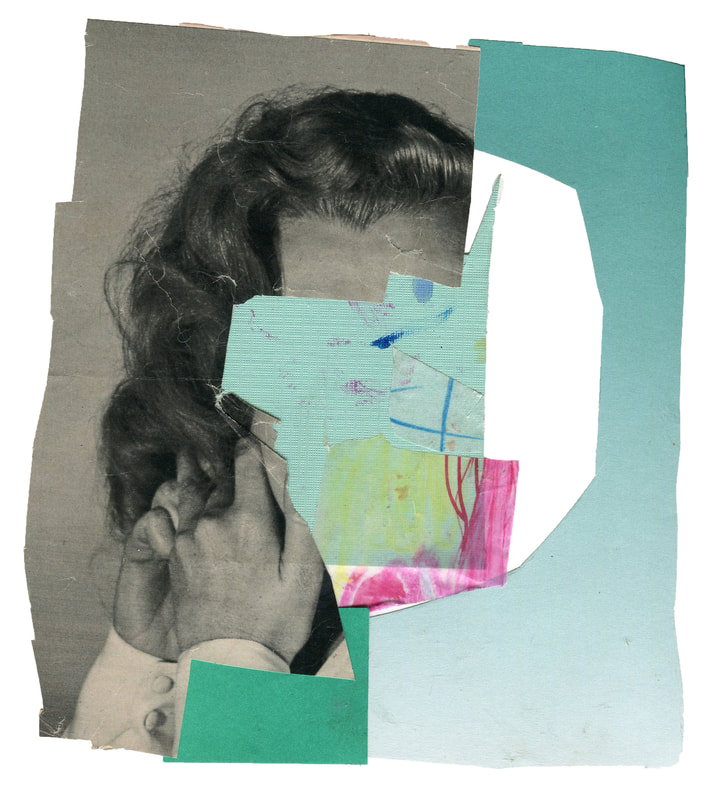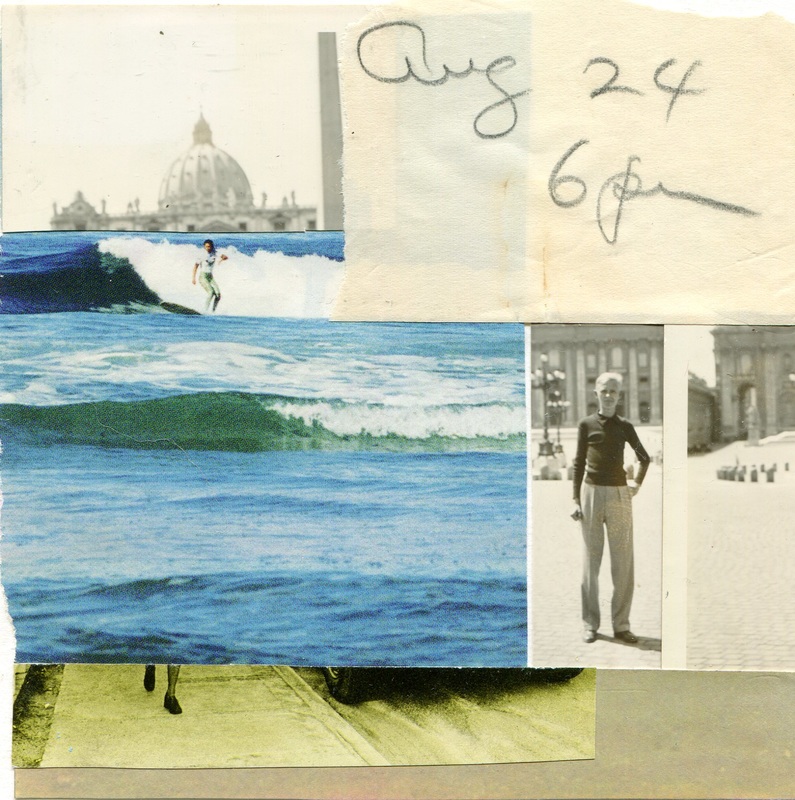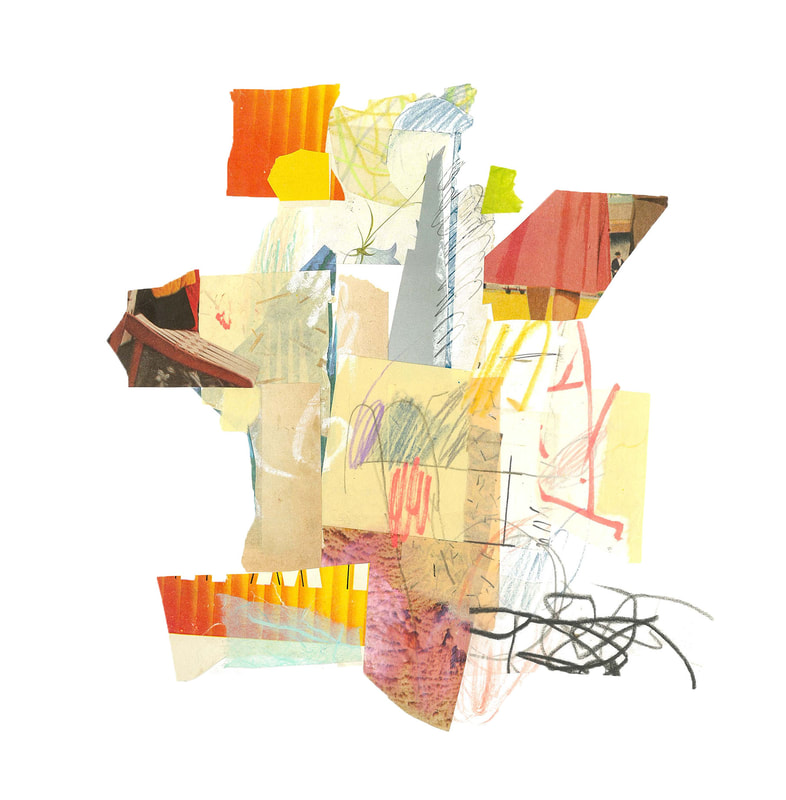interview
PATTI ROBINSON
collage artist
︎ Westhampton Beach/New York/United Statesmarch 18, 2020


Could you please introduce yourself? Where are you from and how did you start to explore art?
I’m from Westhampton Beach, New York. In college I was doing collage work and Joseph Cornell was the subject of my art history thesis. Following graduation my mom said “I know his sister. She lives in our town. Would you like to meet her?” I said, “Oh, my god! Yes!” Afterwards, I worked cataloguing the Cornell source materials that were sent to the Smithsonian and are now at the Joseph Cornell Study Centre. That was the most amazing, synchronistic thing that’s ever happened to me.
When did you start collaging?
In college, creating collage was a refuge from what were, for me, stressful assignments and critiques. Feminist art was pretty new and not really inclusive of small, intimate stuff I was called to create. So, like so many people, I graduated feeling like I wasn’t a good artist. It took me many years to figure out I just didn’t fit that anachronistic mould. I returned to collaging when my son graduated from college. I started one of those 100-day projects and it was a truly transformational experience. I learned that I could be creative no matter what the hell was going on. In fact, “what the hell was going on” not only informed my work, I found that putting it down on paper helped me cope and grow. It was a burden all those years to have my creativity stuck in my head with no outlet. Now I work nearly every day. Sometimes I cheat a bit and make two or three collages in one day if I need a day off.
Do you work in any other media?
I sometimes make jewellery from found objects and repurposed textiles in the same theme as my collages. I love using old stuff.



Your work has a distinctive vintage feel to it. How would you describe your work in your own words?
My source materials are entirely vintage magazines. I’m obsessed with the colours, the print quality and the images. I’m pretty sure I dream in these colours, maybe I always have. I feel I bring a unique understanding of these materials because they were printed and sold during my lifetime. Recently my creative process has been a way to begin healing from a traumatic loss. The process of moving paper around is profoundly meaningful. Do other people see my work that way? I don’t think so and I’m glad because that could be a real bummer at times. I hope viewers get the raw, immediate honesty, though - a kind of Cartier-Bresson “decisive moment” thing, but the moment is internal not external. Composing my titles is a crucial step in sealing the practice; it’s always an, “Ah ha!” moment.
You have a collage series called “Imaginary Places” influenced by childhood memories? Would you call yourself a nostalgic person?
They say life imitates art - or maybe it’s vice versa in my case. I live in the never-remodelled 1950s house I grew up in. It’s filled with vintage yard sale finds, so it’s just one big nostalgia trip in terms of inspiration, colour, pattern, and design. My work, though, is about what’s going on at the moment I’m creating. I complete every collage in one sitting; for me it’s a more authentic way to work as I don’t want my graphic design-trained brain to start calling the shots. Getting caught up in how a collage looks formally, for me, diminishes the meaning.



Which other themes, ideas, or messages do you feel are particularly present or significant in your work?
Relationships between men and women have been a consistent theme as is the concept of domesticity. In part, I’m trying to make sense of my own life but I’m also influenced by the overtly sexist messages in the vintage magazines while I’m tearing them up (sometimes gleefully). When I was young, I was perplexed by ads like “Modess Because” or “I dreamed I was a bullfighter in my Maidenform Bra” and especially the ads for “married women” selling feminine hygiene products. I think our culture has made real progress in terms of body shaming women, yet there is so much that hasn’t changed in terms of relationships between men and women, at least speaking for myself.
For as long as I can remember I incorporated images in my work to tell a story that was very open to interpretation. My beautiful, bad-ass muse died very recently and I’m finding I’m drawn to working abstractly and incorporating painting. I feel that these works are currently more emotionally accurate than my image based work.
What is your creative process like? Do you start with a precise idea, or do you let the work take you where it wants to?
I totally go with the flow, wherever that takes me. My work table and process is so not instagramable! I have a big pile of torn out magazine pages in various states of scavenging and shoe boxes with smaller scraps. My creativity thrives in chaos and the chance visual conversations among my scraps. I move my scraps around until they express something, often something surprising. I don’t start gluing until they make their peace with each other. I’m terrible at working on a theme or working from a prompt or specific image. In five minutes I’ve totally moved on.



Do you ever work with contemporary images or materials?
I only use contemporary materials if I’m doing a live collaboration or a class. It’s fun to use materials I am not drawn to with other people; it’s more of an adventure that way. In general, though, contemporary materials don’t align with the colour schemes or images in my brain.
How do you know a piece is finished?
That’s easy. I listen, it tells me.
Who are some of the artists you admire?
I love outsider art. Eva Hesse. Of course, Joseph Cornell, always. Street art and graffiti. I love textiles, Gee’s Bend Quilts. And fashion: Alexander McQueen. Gary Winogrand Color at the Brooklyn Museum was luscious. So was the Color Riot Native American textile show at the Heard Museum.
You do a lot of collaborations? Can you tell us a little bit about the people you worked with and what these collaborations mean to you?
Community and collaboration are guiding principles for me in general - not just for art. Most of my close friends are either from my activist community, dog rescue community, or art community. I’ve met all the people I collaborate with through the Instagram collage community. Through my involvement in @CollageClub, I got involved in @The CollageGardenNYC. Our team met in person and eventually formed a NYC collage collective, Collage Ensemble. I’m putting together an international traveling show with @katjuskart in Finland. I’d never met @cutpasteface and @jklinedinstcollage in person before we went to the New York Public Library, dumped our source materials on the table, started collaborating, and really clicked. Luckily we didn’t get thrown out of the library! Shout out to my newest collage collaborator @MishapsIncluded.



You teach art, to both children and adults. Do you think formal art education is important?
I can only speak for myself. I failed art every year in high school - on purpose. My teacher was crap and I made it my mission to do exactly the opposite of what he said. It was my fun little way of protesting. I did much better work than if I had followed his lesson plan. The most useful aspect of my formal art education was learning art history, discovering the really good stuff. Of course, back then, the focus was on art made largely by men; that was the art that made it into books and museums. It seemed obvious to me to question that.
What’s the main difference between teaching art to children and teaching it to adults?
I don’t see myself as a teacher, I’m a collaborator. I think of myself as a rebellious cheerleader sort of person. I find that kids are less attached, in general, to the outcome. If we have fun, learn something about the materials, and connect, it’s a good day. I come up with all kinds of experiments in my studio that I don’t post on Instagram but they definitely help move me forward. Adults tend to be more afraid of failure so I endeavour to give them permission to enjoy totally screwing up. I think that’s where the best stuff comes from.
What is the hardest challenge for you being an artist?
Most of my work fits on my scanner. I’d love to work really large, but that’s technically challenging because I so love those original vintage magazine colours and images. And I want to keep it minimal.
Patti Robinson ︎ ︎
interview: Petra Zehner